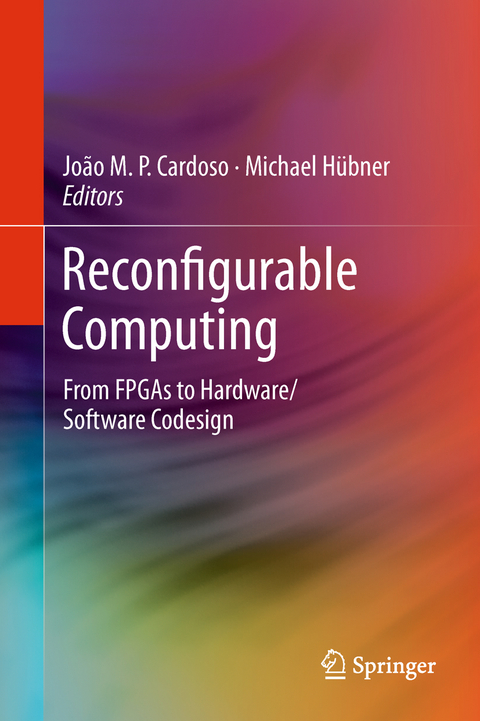
Reconfigurable Computing
From FPGAs to Hardware/Software Codesign
Seiten
2014
Springer-Verlag New York Inc.
978-1-4899-8859-1 (ISBN)
Springer-Verlag New York Inc.
978-1-4899-8859-1 (ISBN)
As the complexity of modern embedded systems increases, it becomes less practical to design monolithic processing platforms. FPGA users must think not only about the gates needed to perform a computation but also about the software flow that supports the design process.
As the complexity of modern embedded systems increases, it becomes less practical to design monolithic processing platforms. As a result, reconfigurable computing is being adopted widely for more flexible design. Reconfigurable Computers offer the spatial parallelism and fine-grained customizability of application-specific circuits with the postfabrication programmability of software. To make the most of this unique combination of performance and flexibility, designers need to be aware of both hardware and software issues. FPGA users must think not only about the gates needed to perform a computation but also about the software flow that supports the design process. The goal of this book is to help designers become comfortable with these issues, and thus be able to exploit the vast opportunities possible with reconfigurable logic.
As the complexity of modern embedded systems increases, it becomes less practical to design monolithic processing platforms. As a result, reconfigurable computing is being adopted widely for more flexible design. Reconfigurable Computers offer the spatial parallelism and fine-grained customizability of application-specific circuits with the postfabrication programmability of software. To make the most of this unique combination of performance and flexibility, designers need to be aware of both hardware and software issues. FPGA users must think not only about the gates needed to perform a computation but also about the software flow that supports the design process. The goal of this book is to help designers become comfortable with these issues, and thus be able to exploit the vast opportunities possible with reconfigurable logic.
Introduction.- The Relevance of Reconfigurable Computing.- HiPEAC: Upcoming Challenges in Reconfigurable Computing.- MORPHEUS: Exploitation of Reconfiguration for Increased Run-time Flexibility and Self-adaptive Capabilities in Future SoCs.- hArtes: Holistic Approach to Reconfigurable Real-time Embedded Systems.- Smart Chips for Smart Surroundings.- AETHER: Self-adaptive Networked Entities: Autonomous Computing Elements for Future Pervasive Applications and Technologies.- ANDRES: Analysis and Design of Run-time Reconfigurable, Heterogeneous Systems.- CRISP: Cutting Edge Reconfigurable ICs for Stream Processing.- ERA: Embedded Reconfigurable Architectures.- REFLECT: Rendering FGGAs to Multi-core Embedded Computing.- Conclusion.
| Erscheint lt. Verlag | 26.11.2014 |
|---|---|
| Zusatzinfo | XV, 296 p. |
| Verlagsort | New York |
| Sprache | englisch |
| Maße | 155 x 235 mm |
| Themenwelt | Informatik ► Weitere Themen ► CAD-Programme |
| Technik ► Elektrotechnik / Energietechnik | |
| Technik ► Maschinenbau | |
| ISBN-10 | 1-4899-8859-9 / 1489988599 |
| ISBN-13 | 978-1-4899-8859-1 / 9781489988591 |
| Zustand | Neuware |
| Haben Sie eine Frage zum Produkt? |
Mehr entdecken
aus dem Bereich
aus dem Bereich
Buch | Softcover (2023)
Beuth (Verlag)
99,00 €
Einführung in die Geometrische Produktspezifikation
Buch | Softcover (2023)
Europa-Lehrmittel (Verlag)
20,70 €


